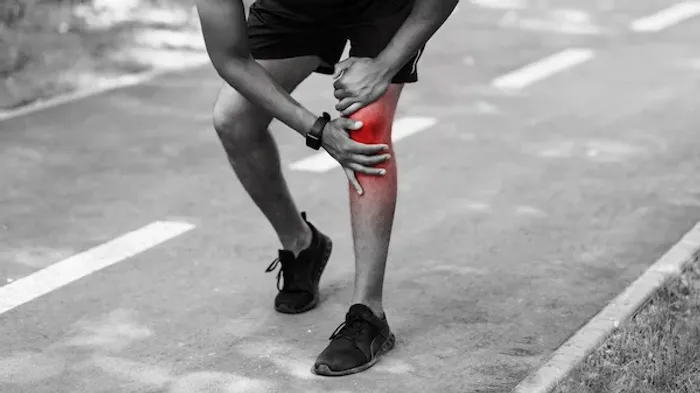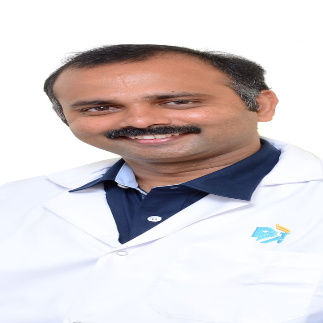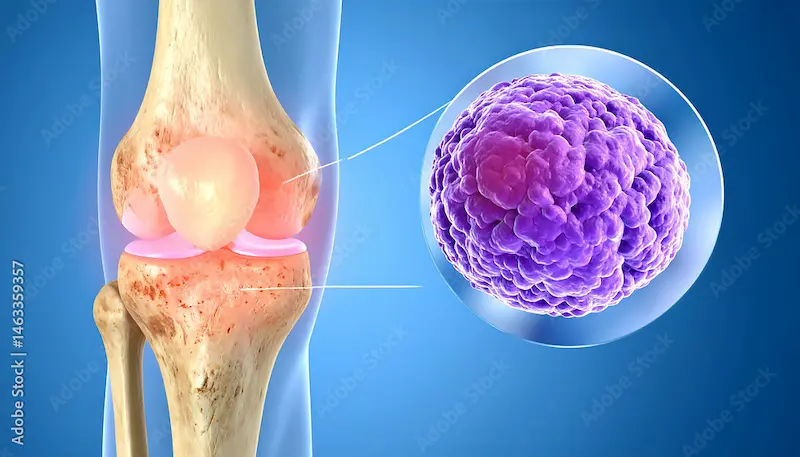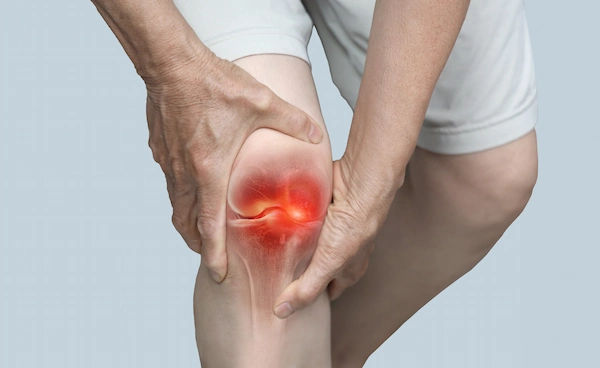Guide to Knee Osteoarthritis Non Surgical Pain Relief
Find effective, non-surgical ways to relieve knee osteoarthritis pain. Explore treatments like physical therapy, injections, medications, and lifestyle changes.


Introduction
Living with knee osteoarthritis can feel like a constant battle against stiffness, ache, and a loss of the mobility you once took for granted. The thought of surgery can be daunting, but what if you could reclaim your comfort and activity level through proven, non-surgical methods? You absolutely can. This guide is your comprehensive roadmap to managing knee osteoarthritis pain without going under the knife. Osteoarthritis isn't just about "wear and tear"; it's an active condition involving the breakdown of cartilage, inflammation, and changes in the bone. The good news is that a multi-faceted approach can significantly reduce discomfort, improve function, and delay or even prevent the need for surgery. We will walk you through everything from foundational lifestyle changes and targeted exercises to advanced injections and supportive devices. Our goal is to empower you with knowledge and practical strategies to help you find lasting pain relief and get back to enjoying life's moments, big and small.
Understanding Your Knee Osteoarthritis: It's More Than Just "Wear and Tear"
Before diving into solutions, it's crucial to understand the opponent. Osteoarthritis (OA) is often misunderstood as a simple result of aging or overuse. In reality, it's a complex degenerative joint disease where the protective cartilage that cushions the ends of your bones wears down over time.
What Exactly is Happening Inside Your Knee?
Imagine your knee joint as a sophisticated hinge. The ends of your thigh bone (femur) and shin bone (tibia) are covered with a smooth, slippery tissue called articular cartilage. This allows for frictionless movement. In OA, this cartilage begins to break down, becoming rough and frayed. Eventually, you can experience "bone-on-bone" friction, which is a primary source of pain. The body may also try to repair the damage by forming bone spurs (osteophytes), which can further limit movement and cause pain.
Common Symptoms Beyond the Ache
While pain is the most prominent symptom, knee OA presents in other ways:
- Stiffness: Especially after periods of inactivity, like first thing in the morning or after sitting for a long time.
- Swelling: This can be caused by soft tissue inflammation or an accumulation of excess fluid in the joint.
- Loss of Flexibility: You may find it difficult to fully bend or straighten your knee.
- A Grating Sensation: You might hear or feel a creaking, cracking, or popping sound (crepitus) when you move the joint.
- Instability: A feeling that your knee might "give way."
Understanding these symptoms helps you and your doctor track the progression of the condition and the effectiveness of your non-surgical treatment plan.
Consult Top Specialists for Personalised Tips
The First Line of Defense: Lifestyle Modifications for Lasting Relief
The most powerful tools for managing knee OA are often the simplest. These foundational changes can create a profound impact on your pain levels and overall joint health.
Weight Management: The Single Most Effective Strategy
It's a simple equation of physics: every extra pound on your body exerts about four pounds of additional pressure on your knee joints when you walk. For someone 10 pounds overweight, that's 40 extra pounds of force with each step. Losing even a small amount of weight can dramatically reduce stress on the joints. A study from the Arthritis Foundation suggests that losing 10 pounds can relieve 40 pounds of pressure from your knees. This is often the most effective natural remedy for knee osteoarthritis.
Activity Modification: Pacing is Key
This doesn't mean stopping all activity. It means being smart about it. Avoid high-impact activities that cause pounding on the joints, such as running on pavement, jumping, or playing tennis on hard courts. Instead, swap them for low-impact alternatives. Also, learn to pace yourself. If you know a day of shopping will cause a flare-up, plan rest breaks beforehand. Listening to your body is a critical skill in managing knee osteoarthritis without surgery.
Movement is Medicine: The Role of Exercise and Physical Therapy
It may seem counterintuitive to move a painful joint, but controlled movement is essential for keeping the knee healthy. A physical therapist can design a personalized program, but key components include:
Strengthening the Support System: Quads and Hamstrings
The muscles around your knee act as natural shock absorbers. Strong quadriceps (front of the thigh) and hamstrings (back of the thigh) provide stability and reduce the load on the joint itself. Simple exercises like straight-leg raises, hamstring curls, and wall sits can build this crucial support.
Improving Flexibility and Range of Motion
Gentle stretching of the muscles around the knee and hip helps maintain flexibility, reduces stiffness, and improves your ability to perform daily tasks. This is vital for combating the loss of mobility associated with OA.
Low-Impact Cardio for Joint Health
Activities like swimming, water aerobics, cycling, and using an elliptical trainer keep you fit and help control weight without jarring the joints. They also promote blood flow, which can help reduce inflammation.
Leveraging Pain Relief Medications Wisely
When pain and inflammation flare up, medications can be a helpful tool in your arsenal.
Topical Treatments: Targeted Relief with Fewer Side Effects
Creams, gels, and patches applied directly to the knee can provide significant knee pain relief at home. Options include:
- NSAID Gels (e.g., Diclofenac gel): These reduce inflammation right at the source with minimal absorption into the bloodstream.
- Capsaicin Creams: Derived from chili peppers, they work by depleting a chemical called Substance P, which is involved in pain signaling.
Oral Medications: NSAIDs and Acetaminophen
- Acetaminophen: Effective for mild to moderate pain but does not reduce inflammation.
- Nonsteroidal Anti-inflammatory Drugs (NSAIDs): like Ibuprofen or Naproxen, address both pain and inflammation. It's crucial to use these under a doctor's guidance due to potential side effects like stomach upset or increased cardiovascular risk. If you are considering long-term use of NSAIDs, it's wise to consult a doctor online with Apollo24|7 to discuss the best and safest option for you.
Advanced Non-Surgical Interventions
When lifestyle changes and oral medications aren't enough, several in-office procedures can provide more potent relief.
Corticosteroid Injections: Powerful but Short-Term Relief
These are potent anti-inflammatory medications injected directly into the joint. They can provide rapid and significant pain relief, often for several weeks or months. However, their effects are temporary, and frequent repeated use is generally discouraged as it may potentially damage cartilage over time.
Hyaluronic Acid Injections: Supplementing Your Joint Fluid
Think of this as adding lubrication to a squeaky hinge. Hyaluronic acid is a natural component of healthy joint fluid. In OA, this fluid becomes thinner and less effective. These injections aim to restore cushioning and lubrication, reducing pain and improving mobility. The effects may take a few weeks to manifest but can last for six months or longer.
Genicular Nerve Blocks: A Modern Approach to Disrupting Pain Signals
This is a more advanced intervention where the nerves that transmit pain signals from the knee (the genicular nerves) are targeted. Using imaging guidance, a physician numbs these nerves. If the block is successful, a longer-term procedure (radiofrequency ablation) can be performed to deactivate these nerves, providing pain relief that can last for 12-18 months. This is an excellent option for those who are not candidates for surgery.
Creating Your Personalized Pain Management Plan
There is no one-size-fits-all solution for knee OA. Your plan should be as unique as you are, tailored to the severity of your condition, your activity goals, and your overall health. The most successful approach is often a combination of the strategies discussed above. If your condition does not improve after trying these methods, book a physical visit to an orthopaedic specialist with Apollo24|7 for a comprehensive evaluation and personalized treatment plan.
Consult Top Specialists
Conclusion
Living with knee osteoarthritis requires a proactive and persistent approach, but it does not have to mean a life dominated by pain or a direct path to surgery. By understanding the condition and embracing a comprehensive management strategy, you can take control of your symptoms. Start with the foundational pillars of weight management and appropriate exercise. Use medications wisely for flare-ups, and don't hesitate to discuss advanced non-surgical interventions with your doctor if needed. The journey to knee osteoarthritis non-surgical pain relief is a marathon, not a sprint. Be patient with yourself, celebrate small victories, and remember that consistent effort in these areas can lead to a significant improvement in your quality of life, allowing you to move with greater comfort and confidence.
Consult Top Specialists for Personalised Tips

Dr. Rajib Ghose
General Physician/ Internal Medicine Specialist
25 Years • MBBS
East Midnapore
VIVEKANANDA SEBA SADAN, East Midnapore

Dr. Rohinipriyanka Reddy
General Practitioner
9 Years • MBBS
Hyderabad
Apollo 24|7 Clinic, Hyderabad

Dr. Rama Narasimhan
General Physician/ Internal Medicine Specialist
20 Years • MBBS, MD
Chennai
Apollo Hospitals Greams Road, Chennai

Dr. Senthilmuthu K
General Physician/ Internal Medicine Specialist
6 Years • MBBS, MD
Karur
Apollo Hospitals Allwyn Nagar, Karur
(75+ Patients)

Dr Rajashree Dhongade
General Physician/ Internal Medicine Specialist
9 Years • MD.Medicine,Fellowship in Critical Care Medicine (MUHS)
Nashik
Apollo Hospitals Nashik, Nashik
(25+ Patients)
Consult Top Specialists

Dr. Rajib Ghose
General Physician/ Internal Medicine Specialist
25 Years • MBBS
East Midnapore
VIVEKANANDA SEBA SADAN, East Midnapore

Dr. Rohinipriyanka Reddy
General Practitioner
9 Years • MBBS
Hyderabad
Apollo 24|7 Clinic, Hyderabad

Dr. Rama Narasimhan
General Physician/ Internal Medicine Specialist
20 Years • MBBS, MD
Chennai
Apollo Hospitals Greams Road, Chennai

Dr. Senthilmuthu K
General Physician/ Internal Medicine Specialist
6 Years • MBBS, MD
Karur
Apollo Hospitals Allwyn Nagar, Karur
(75+ Patients)

Dr Rajashree Dhongade
General Physician/ Internal Medicine Specialist
9 Years • MD.Medicine,Fellowship in Critical Care Medicine (MUHS)
Nashik
Apollo Hospitals Nashik, Nashik
(25+ Patients)
More articles from Osteoarthritis
Frequently Asked Questions
What are the best natural remedies for knee osteoarthritis pain?
Focus on anti-inflammatory foods (like fatty fish, berries, and olive oil), weight management, and consistent low-impact exercise like swimming or cycling. Turmeric supplements have also shown some anti-inflammatory properties in studies, but always consult your doctor before starting any new supplement.
How can I tell if my knee pain is from osteoarthritis or something else?
OA pain typically develops gradually, is worse with activity and better with rest, and is accompanied by stiffness, especially in the morning. Sudden, sharp pain from an injury or pain with redness, heat, and significant swelling might indicate other issues like gout or an infection. A proper diagnosis from a doctor is essential.
What is the difference between a corticosteroid and a hyaluronic acid injection?
Corticosteroid injections are strong anti-inflammatories that provide quick, short-term relief (weeks to months). Hyaluronic acid injections act as a lubricant and shock absorber, with effects that build up over a few weeks but may last longer (up to 6-12 months). Your doctor can advise which is better for your specific case.
Is walking good for knee osteoarthritis?
Yes, in moderation. Walking is an excellent low-impact exercise that helps maintain joint mobility and strengthen leg muscles. The key is to walk on even surfaces, wear supportive shoes, and stop if you experience sharp, increasing pain.
When should I consider surgery for my knee osteoarthritis?
Surgery (like a knee replacement) is typically considered when non-surgical treatments have been exhausted and the pain is severe enough to significantly impact your quality of life, sleep, and ability to perform daily activities, despite other interventions.


.webp)